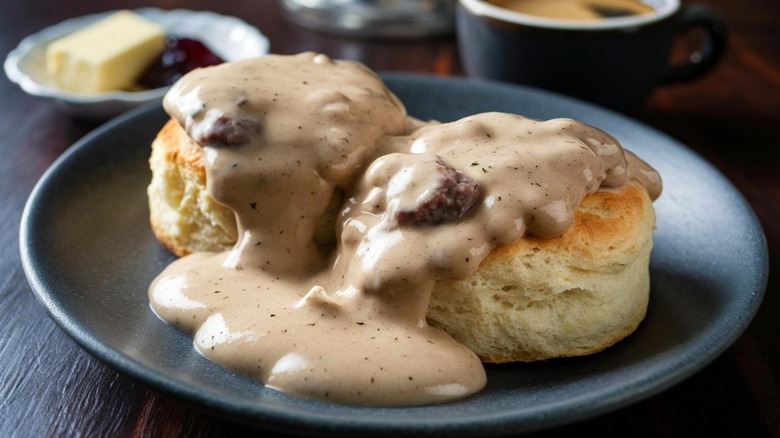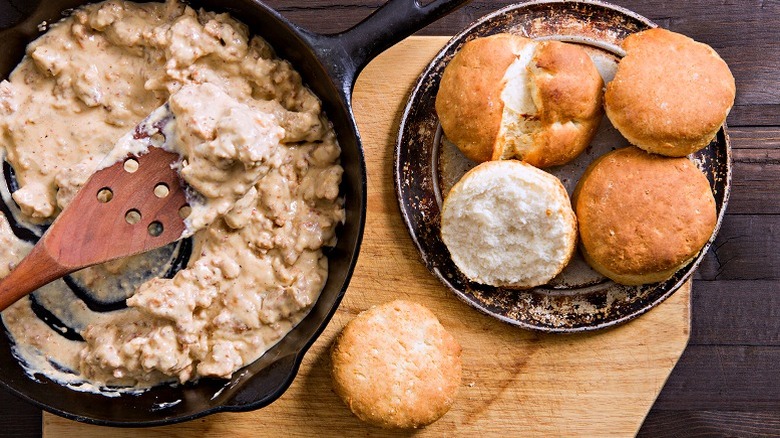How Biscuits And Gravy Became The Historic Breakfast Of Appalachia
Buttermilk biscuits and sawmill gravy is about as Southern as it gets. This breakfast staple has been a part of restaurant menus and home-cooked meals alike, revered for its warm, soft, and filling qualities. The sweetness of a baked good like biscuits combined with a salty, savory gravy makes it a great side dish for fried chicken, country-fried steak, and smothered pork chops. But before the modern biscuits and gravy firmly planted its roots in the Southern and soul food culinary canon, its humble origins trace back to working-class Appalachia.
Appalachia is often at the heart of the United States' labor history. Several country music songs detail the struggles of coal miners and loggers who struggled to put food on the table throughout the late 19th and early 20th centuries. These jobs were incredibly tough on the body, with men working long days for little pay. Wives and mothers had to get creative with their cooking in order to survive and stretch the most life out of their ingredients, often relying on native plants that grew in the region or whatever livestock their neighbors kept. Biscuits and gravy became a commonplace dish that would keep families full during these hard times.
The evolution of biscuits and gravy
Biscuits and gravy started out as little more than flour and water. This mix would make a brittle disc more akin to a cracker — this wasn't very pleasant to eat — so people found a solution to the blandness by adding fat. Butter, milk, baking powder, and shortening made these biscuits softer once they became more commonplace ingredients. And once biscuits in a tin came out in Kentucky during the Great Depression, people opted for the pre-made mix.
The other half of the fat equation was bulldog gravy (no, not made from real bulldogs). This gravy was made from flour, water, and pork grease, often leftover from another dish like bacon because pigs were a poor man's food at the time. It was easy to turn the fat into a flavorful roux that could coat biscuits. Coal miners often ate beans, cornbread, and bulldog gravy to sustain themselves through the terrible work days. As industrialization grew in the U.S., more kinds of food became accessible to citizens, and with this movement came innovation and improvement upon old recipes.
Through years of tradition, Southerners have passed down biscuits and gravy as a part of the food culture. The biscuit was, and still is, a treat for many — reserved for special occasions or family meals together. Thank goodness for the buttermilk biscuits and gravy we have today.

